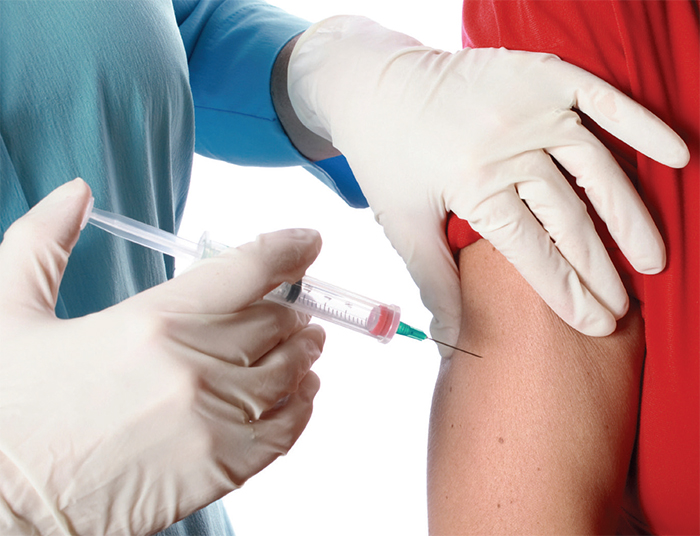Flu vaccination
In Clinical
Follow this topic
Bookmark
Record learning outcomes
Scenario
Mark Chard is in the pharmacy, having already dropped off his children at school.
“I think I’m losing the plot, or I’m getting too old to cope with change,” he groans to technician Vicky. “I’ve got into a complete muddle with the kids’ flu jabs. Are they even jabs any more?” queries Mark. “Last year I took William to the GP surgery and the nurse gave him an injection because his asthma means that if he gets flu, it’s more likely to be nasty. But Hattie doesn’t have asthma, yet they seemed to do all the kids at her nursery last year, and this year we’ve had a letter saying that she’s having it done at school. But Hattie called it ‘a squirty thing up my nose’. To be honest, I’m not sure how good that is, I mean what if they sneeze afterwards?”
“OK, so Hattie must be four” responds Vicky. “Remind me how old William is?”
“He’s nine,” replies Mark.

Answer
This year is the first time that all children aged between two and 17 years in England who are eligible for vaccination against influenza are being given the nasal spray vaccine rather than an injection.
At four years old, Hattie was born between 1 September 2011 and 31 August 2014 and she is therefore entitled to a free flu vaccination. This may be given at a GP surgery, school or another community or childcare setting. William is also eligible as he falls under the category of children aged two to 17 years with long-term health conditions. Mark needs to make an appointment for William’s vaccination to be administered at the GP surgery.
The nasal vaccine is given as a single spray squirted up each nostril. Being quick and needle-free, it is hugely advantageous for children, and there is evidence that it is more effective than the flu jab. The nasal mucosa absorbs the product very rapidly, meaning that the chance of the vaccine failing is incredibly small, even if the child sneezes or blows his or her nose afterwards.
The only children for whom the nasal spray is not suitable are those who are immunocompromised, are actively wheezing or have very severe asthma (defined as individuals taking high dose inhaled steroids or who have been prescribed oral steroids within the last 14 days), are on salicylates, or are allergic to any of the ingredients.
The bigger picture
In 2012, the Joint Committee on Vaccination and Immunisation (JCVI) recommended that the annual flu vaccination programme – which at the time was limited to those considered at high risk from complications of the illness, such as those aged 65 years and over, pregnant women and individuals with certain long-term conditions – should be extended to all healthy children aged from two to 17. This was a huge logistical and practical challenge, so the extension is being phased in, with more children included each year.
Across the UK this year, all children who were aged between two and seven years on 31 August plus all two to 17-year-olds with long-term health conditions qualify for a free NHS vaccination. In some areas, such as Scotland, all children are being offered the vaccine. Children aged between six months and two years who are in at-risk groups are also being offered the injection.
Extend your learning
- What do you understand by the term “immunocompromised”? What patient groups are considered to be in that category?
- Read the “Key Findings” section of the Influenza immunisation programme for England: GP patient groups. What is your view on the percentage of people vaccinated against flu during 2015-16? Is your pharmacy trying to improve its numbers this year?
- Why do you think the JCVI recommends including all children in the annual flu vaccination programme? Information is available in the Flu Plan Winter 2016/17.
- Do you feel able to help parents decide whether their child falls into an at-risk group?
- It is recommended that frontline health workers have the flu vaccine. Have you had yours?
